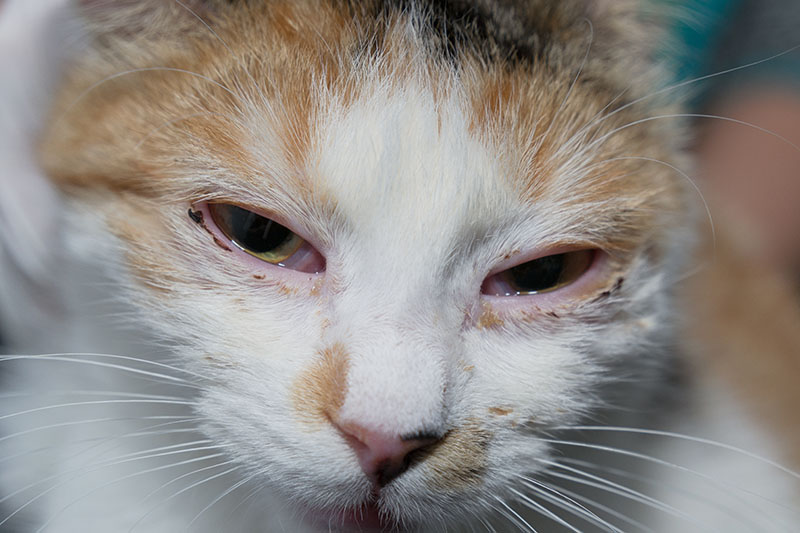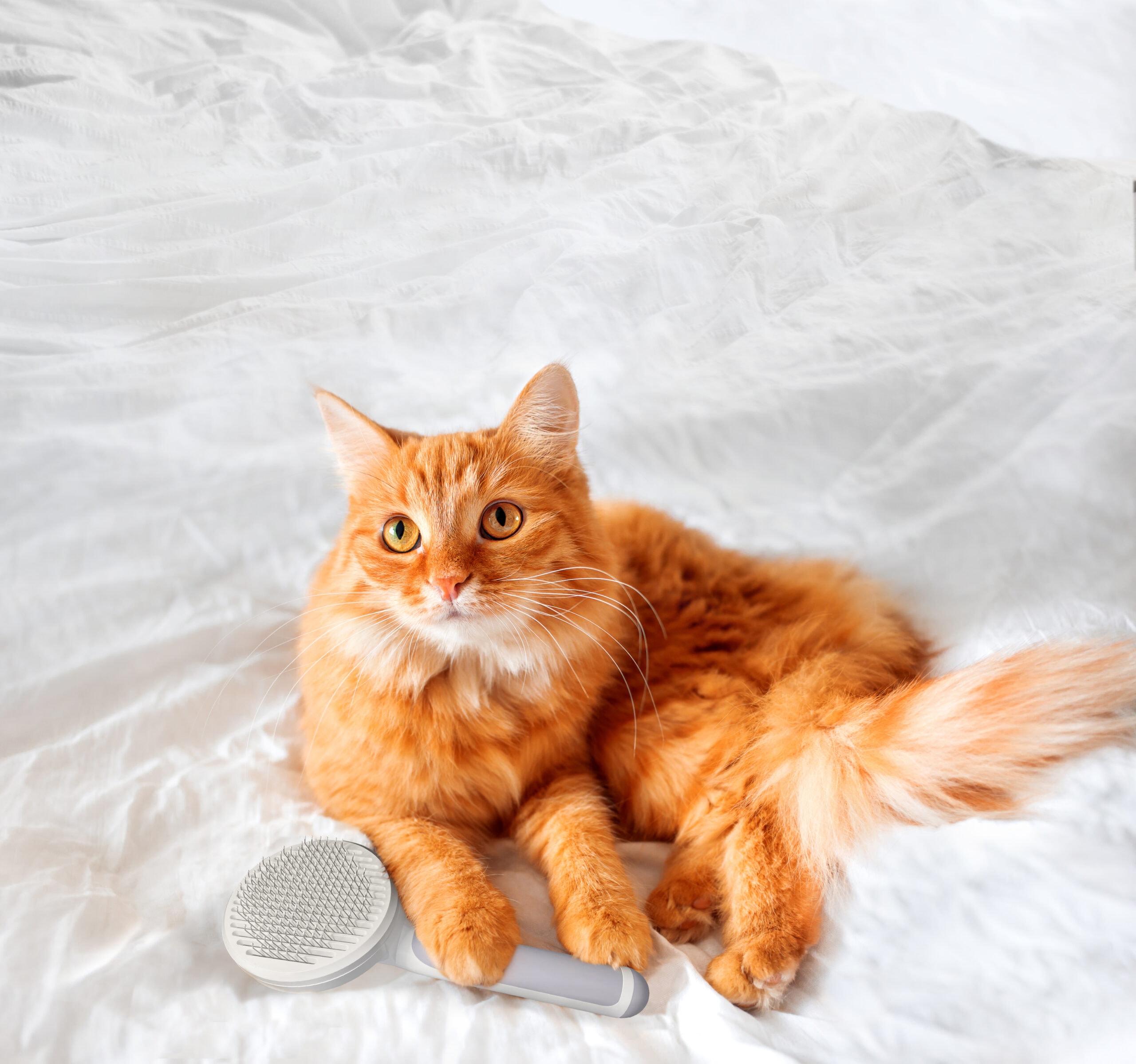Why Does My Cat Scratch the Floor? 5 Common Reasons

Updated on
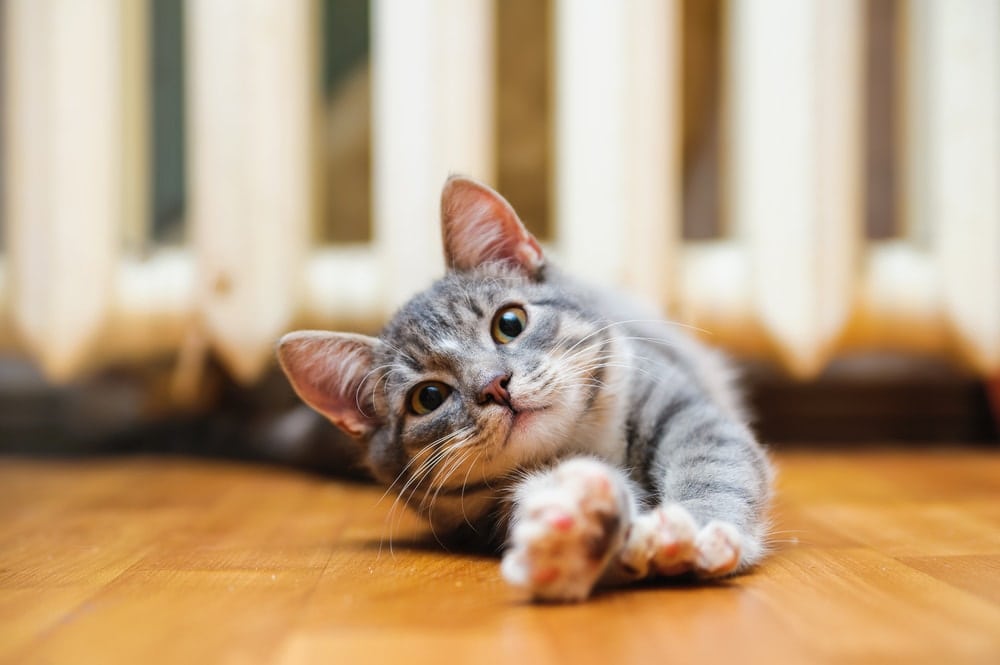
Click to Skip Ahead
Are you tired of finding scratch marks on your pristine floors? Do you wonder why your beloved feline friends insist on using your hardwood as their personal scratching post? Don’t worry, you’re not alone. Cats scratching on floors is a common behavior that can leave many pet owners scratching their heads in frustration. From their innate need to mark territory to sharpening their claws, we will explore the fascinating world of a cat’s scratching habits. And that’s not all–we’ll also equip you with practical tips and tricks on how to redirect this behavior and protect your floors.
The 5 Reasons Why Cats Scratch the Floor
Cats scratch on floors for a variety of reasons. Understanding these reasons can help us address the underlying causes of floor scratching and implement effective strategies to redirect their behavior. Let’s look at the most common ones.
1. Territory Marking
Cats have a strong instinct to mark their territory, and one way they do this is by scratching on the floor. This behavior is rooted in their innate need to establish boundaries and assert their dominance. By scratching the floor, cats are able to leave their scent behind, effectively marking their territory. This behavior is really common in households with multiple cats, where cats may feel the need to assert their dominance more strongly in order to establish their own space.
In these situations, it’s important for cat owners to provide appropriate scratching surfaces and outlets for their cats, such as scratching posts or mats. By providing these options, cat owners can help redirect their pet’s natural territorial instincts in a more suitable manner, while also preventing damage to furniture and other household items. Understanding and accommodating a cat’s need to mark their territory through scratching is an essential part of responsible cat ownership.
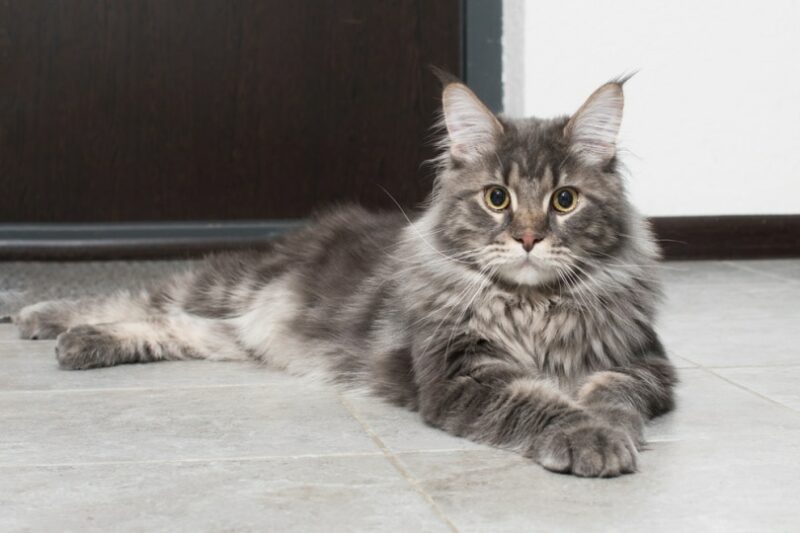
2. Comfort & Security
Floors play a crucial role in providing a stable and secure surface for cats to scratch on. Cats have a natural instinct to scratch, as it helps them keep their claws healthy and sharp. By scratching the floor, cats are able to create a familiar and comforting environment for themselves. This behavior is especially important for cats that spend a significant amount of time on the floor, such as indoor cats or those that have limited access to outdoor spaces. Scratching the floor can also help cats relieve stress and anxiety, as it provides them with an outlet for their pent-up energy.
3. Lack of Suitable Alternatives
Cats have a natural instinct to scratch, which helps them keep their claws healthy and maintain their territory. However, if cats don’t have access to suitable scratching surfaces, they may resort to scratching on floors, carpets, or furniture out of necessity. This can lead to damage and frustration for both the cat and the owner. So, it’s crucial to provide cats with a variety of scratching options to meet their individual preferences.
Having multiple scratching surfaces in different areas of the house allows cats to fulfill their scratching needs without resorting to destructive behavior. These surfaces can include scratching posts, cat trees, and cardboard scratchers. By providing a variety of textures and materials, such as twine, carpet, and cardboard, owners can cater to their cat’s specific preferences.
4. Proximity to Human Interaction
Cats are highly social animals and thrive on interaction and attention from their human companions. While they may not exhibit the same level of dependence on social interaction as dogs, cats still seek out engagement with their owners. One way in which cats may communicate their needs or desires is through their behavior, such as scratching the floor. This behavior can serve as a means of getting their owner’s attention and initiating interaction.
When a cat realizes that scratching the floor garners a response or attention from their owner, they may continue this behavior as a form of communication. Cats are intelligent creatures and quickly learn cause and effect. If they scratch the floor and their owner responds by engaging with them or giving them attention, the cat may associate scratching with positive outcomes. As a result, they may continue to scratch the floor in order to elicit the desired response from their owner.
5. Boredom or Stress
Sometimes cats may scratch on the floor as a result of boredom or stress. For most, if they don’t receive enough mental and physical stimulation, they may become bored and engage in destructive behaviors like scratching. Additionally, changes in their environment, such as moving to a new home or the introduction of a new pet, can cause anxiety and stress for cats, leading them to resort to scratching as a coping mechanism.
To prevent cats from scratching the floor, it helps to provide them with adequate stimulation and enrichment. This can be done through interactive play sessions, providing toys that encourage mental stimulation, and creating a stimulating environment with scratching posts and climbing structures. By engaging cats in these activities, their need for mental and physical stimulation is fulfilled, reducing the likelihood of them resorting to destructive scratching behaviors.
In cases where changes in the environment are causing anxiety and stress for cats, it’s important to address the underlying issues. This may involve gradually introducing the cat to the new environment or providing them with a safe space where they can retreat and feel secure. Additionally, using pheromone sprays or diffusers can help calm cats and reduce their stress levels.
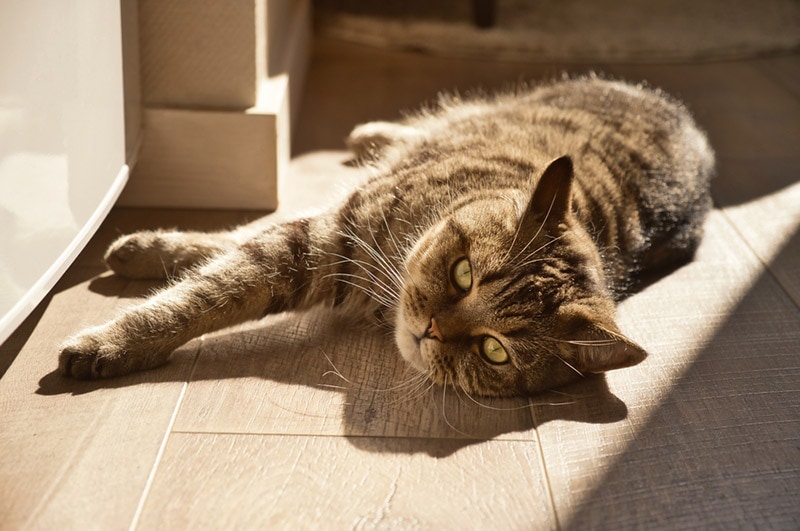
The Different Types of Cat Scratching
Not all cat scratching is the same. Believe it or not cats have different preferences when it comes to scratching surfaces, and understanding these preferences can help us provide them with suitable alternatives.
Vertical Scratching
Vertical scratching is one of the most common types of scratching behavior. Cats often prefer to stretch their bodies upwards and scratch on vertical surfaces, such as walls or furniture legs. This type of scratching allows them to fully extend their bodies and engage their muscles.
Horizontal Scratching
This type of scratching, on the other hand, involves scratching on flat surfaces. This can include the floor, carpets, or rugs. Cats may choose to scratch horizontally for various reasons, such as marking their territory or sharpening their claws.
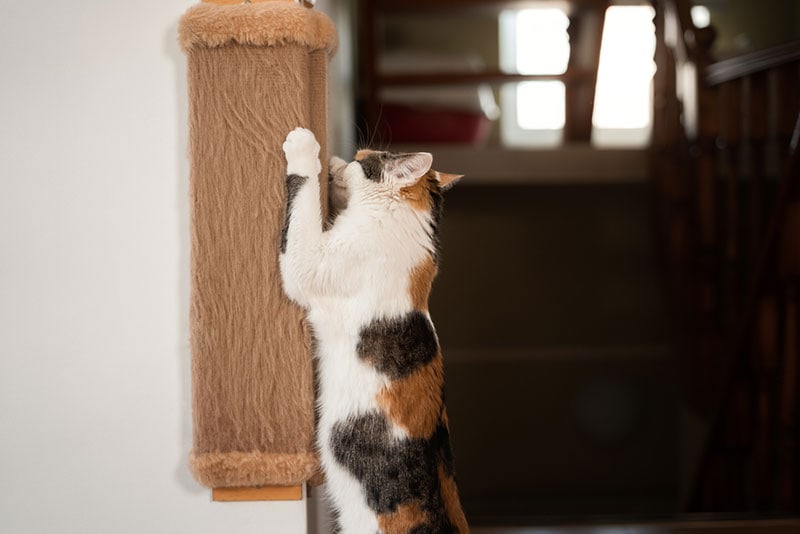
Texture-based Scratching
It’s also important to note that cats may have individual preferences for the texture of scratching surfaces. Some cats may prefer rough surfaces, such as sisal or burlap, while others may gravitate towards smoother surfaces like wood or cardboard. Understanding your cat’s preferences can help you provide them with the most appealing scratching alternatives.
How to Prevent Cats from Scratching on Floors
While it may seem like a daunting task, preventing cats from scratching on floors is entirely possible with the right approach. Here are some practical tips to do it:
Provide Alternative Scratching Surfaces
One of the most effective ways to prevent cats from scratching on floors is to provide them with alternative scratching surfaces. Having a variety of scratching posts or boards in different areas of your home will give your cat plenty of options to choose from.
When selecting scratching surfaces, consider your cat’s preferences. If your cat prefers vertical scratching, invest in tall scratching posts or attachable wall scratching pads. If horizontal scratching is their preference, provide them with flat scratching boards or mats.
It’s also helpful to choose scratching surfaces with different textures to cater to your cat’s individual preferences. Experiment with cardboard, twine, old carpet, or even wood to find the materials that your cat finds most appealing.
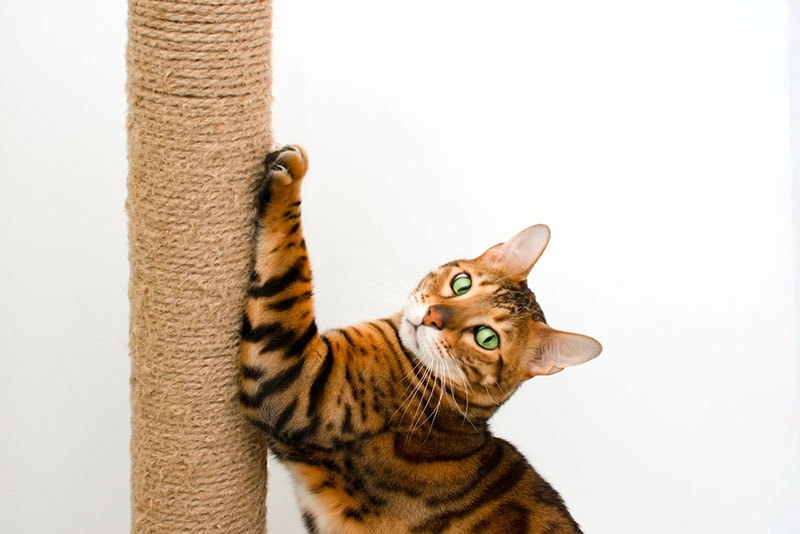
Use Deterrents to Discourage Scratching on Floors
If your cat continues to scratch on the floor despite having appropriate alternatives, you can use deterrents to discourage this behavior. There are several cat-friendly deterrents available on the market, such as sticky tapes or double-sided tape, that can be applied to the areas your cat frequently scratches.
Cats generally dislike the sticky texture of these products, and it can discourage them from scratching on the floor. However, it’s important to note that deterrents should be used in conjunction with providing attractive scratching alternatives, as simply punishing or deterring your cat without offering an alternative may lead to increased stress or anxiety.
Redirect & Train Cats to Use Appropriate Scratching Areas
Redirecting your cat’s scratching to surfaces that are more appropriate requires patience and consistency. So, whenever you catch your cat scratching on the floor, gently redirect them to their designated scratching post or board. Use positive reinforcement by praising and rewarding them when they use the appropriate surface. You can also use toys or treats to lure your cat towards the scratching alternatives. By associating positive experiences with the designated scratching areas, your cat will be more inclined to use them instead of the floor.
Additionally, you can try using different types of pheromone diffusers and sprays to create a calming atmosphere and reduce stress-related scratching. These products release synthetic pheromones, similar to the natural ones produced by cats, helping to create a sense of comfort and security.
Wrapping Things Up
Cats scratching on floors can be a really frustrating experience for any pet owner. However, with a better understanding of their scratching behavior and the reasons behind it, you can effectively redirect their scratching habits and protect your floors. So, remember that scratching is a natural behavior for cats, and it serves several important purposes. By providing your cat with appropriate scratching alternatives and understanding their preferences, you can satisfy their feline instincts and minimize damage to your floors.
And remember to be patient and consistent in redirecting your cat’s scratching behavior, and always reward and praise them when they use the designated scratching surfaces. By creating a positive association, your cat will be more likely to choose the alternatives over your floor.
Featured Image Credit: mik ulyannikov, Shutterstock



